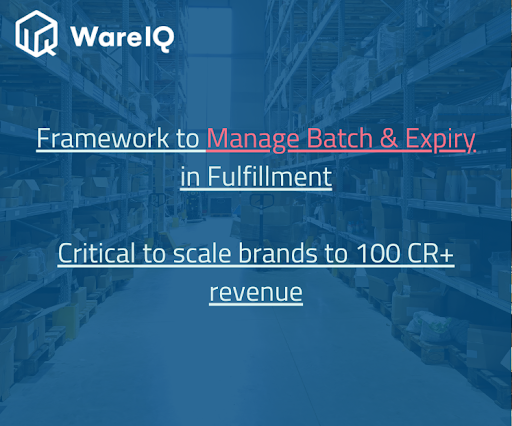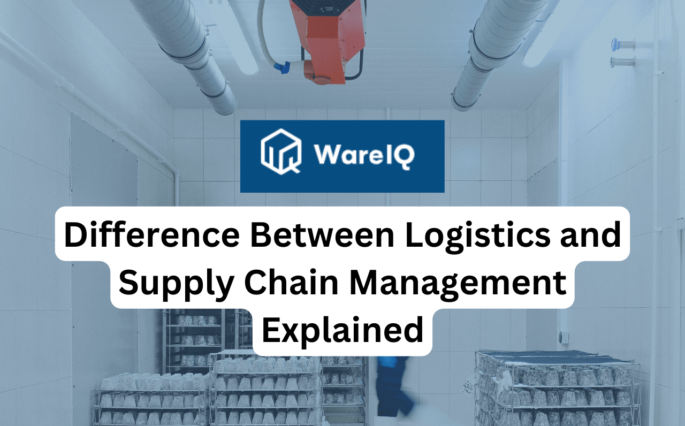Managing Batch and Expiry in Fulfillment: Critical for Scaling Digital Brands on Marketplaces, Quick Commerce & B2B

As digital-first brands edge closer to the INR 100 crore (~USD 12 million) revenue mark, their reliance on purchase orders (POs) from Quick commerce platforms, marketplaces, and B2B channels increases. These channels demand precision and operational efficiency, particularly in the management of inventory by batch and expiry dates, which becomes crucial for avoiding costly PO rejections.
In this blog, we are going to discuss managing batch and expiry in fulfillment and its importance for digital-first brands.
The Need for a Framework in Batch and Expiry Management
One of the key aspects of fulfilling these POs is batch and expiry management. Everyone, from marketplaces to Quick commerce players, wants fresh stock, often requiring products that were manufactured within specific timelines. This makes it essential for fulfillment centers to not only manage inventory at the SKU level but also at the batch level. Without this, brands run the risk of mixing older batches with new ones, leading to PO rejections.
As supply chains expand, these rejected POs create significant ripple effects in both cost and reputation. Thus, the need for a robust framework to manage batch and expiry is no longer optional but a necessity.
The Costs of PO Rejections: A Major Metric for Supply Chain Leaders
Rejection of POs has become a critical metric for supply chain leaders as they scale their brands. Here’s why:
- Operational inefficiencies: Each rejected PO forces the brand to navigate reverse logistics, leading to extra costs in terms of warehousing and transportation. As this back-and-forth increases, so does the cost of inefficiencies.
- Revenue losses: A rejected PO can directly translate into lost revenue, especially if a product’s shelf life is nearing its end. With digital brands increasingly dependent on high-volume orders from Quick commerce and B2B channels, PO rejections can represent a major loss.
- Brand trust: As more channels reject POs due to expired or mixed batches, trust erodes. This makes it harder to secure future orders, which can hinder brand growth—especially in competitive segments.
Introducing a Framework for Batch-Level PO Fulfillment
To address these challenges, brands need to move beyond simple SKU-level inventory tracking and adopt a comprehensive framework for batch and expiry management. Based on our experience at WareIQ, we recommend a structured 4-step framework that ensures seamless fulfillment of POs:
1. Real-Time Batch Tracking and Segregation
The foundation of effective PO fulfillment lies in real-time tracking of inventory at the batch level. Fulfillment centers must implement systems that label and segregate stock by both SKU and batch immediately upon receipt. This ensures that the right batch is always picked, reducing errors and keeping POs aligned with channel requirements for freshness.
2. Automated Allocation of Stock Based on PO Requirements
When processing POs, automation is essential to ensure the correct batch of products is allocated for each order. At WareIQ, our systems automatically match POs with the appropriate batch based on manufacturing and expiry dates. This eliminates the risk of manual errors, ensuring that only the freshest stock is picked for each channel, whether it’s for Quick commerce, marketplaces, or B2B clients.
3. FIFO/FEFO Logic for Efficient Stock Management
Implementing First In, First Out (FIFO) or First Expiry, First Out (FEFO) logic is crucial to reducing wastage while meeting the demands of each PO. FIFO ensures that older batches are sent out first, while FEFO prioritizes products closest to their expiry date. This not only optimizes stock movement but also prevents the dispatch of expired or nearly expired goods—drastically reducing the likelihood of PO rejections.
4. Visibility and Analytics for Predictive PO Management
Having visibility into batch-level inventory across multiple channels enables proactive decision-making. With robust analytics in place, supply chain leaders can predict which batches are likely to face expiry issues and prioritize them for upcoming POs. This level of foresight also helps brands negotiate better with partners, aligning production cycles more closely with PO trends.
Explore : WareIQ PO Creation & Real-time Inventory Transfer Tracking
Case Example: Achieving 0% PO Rejection for a Leading Cosmetic Brand
At WareIQ, we partnered with a rapidly growing cosmetic brand with INR 500 crore + (~USD 60 million) revenue milestone to help them achieve 0% PO rejection. This brand, known for its mass-market cosmetics products, faced challenges with 5-10% PO rejections due to older batches being mixed with newer ones, leading to inefficiencies and strained channel relationships. By implementing WareIQ’s batch and expiry management framework—comprising automated batch allocation, real-time tracking, and FIFO/FEFO logic—the brand was able to ensure that only the freshest stock was sent out for every order, eliminating the risk of rejection.
As a result, the brand saw immediate improvements, achieving zero PO rejections across Quick commerce and marketplace channels, and optimizing their inventory management. This enhanced precision not only prevented wastage but also improved their reputation with channel partners, leading to increased order volumes and smoother operations. This case underscores the importance of batch-level inventory control in scaling digital brands efficiently while maintaining strong channel relationships.
Also read: How to Fix Inventory Mismatch in Warehouses
Conclusion: The Road to Growth with PO Efficiency
In today’s rapidly evolving eCommerce and supply chain landscape, managing inventory at both the SKU and batch levels is essential for brands scaling towards INR 100 crore (~USD 12 million) and beyond. A robust framework for batch and expiry management is critical for fulfilling POs efficiently, reducing rejection rates, and driving sustainable growth.
By integrating these principles into your operations, brands can mitigate risks, optimize their supply chains, and capitalize on new growth opportunities across Quick commerce, marketplaces, and B2B channels.
At WareIQ, we are committed to helping brands scale with confidence, delivering solutions that simplify the complex dynamics of fulfillment—especially when it comes to managing the crucial aspects of batch and expiry tracking for every PO.









